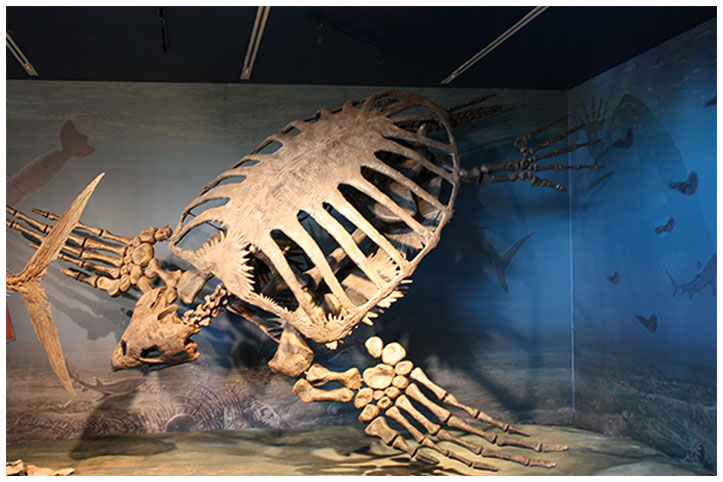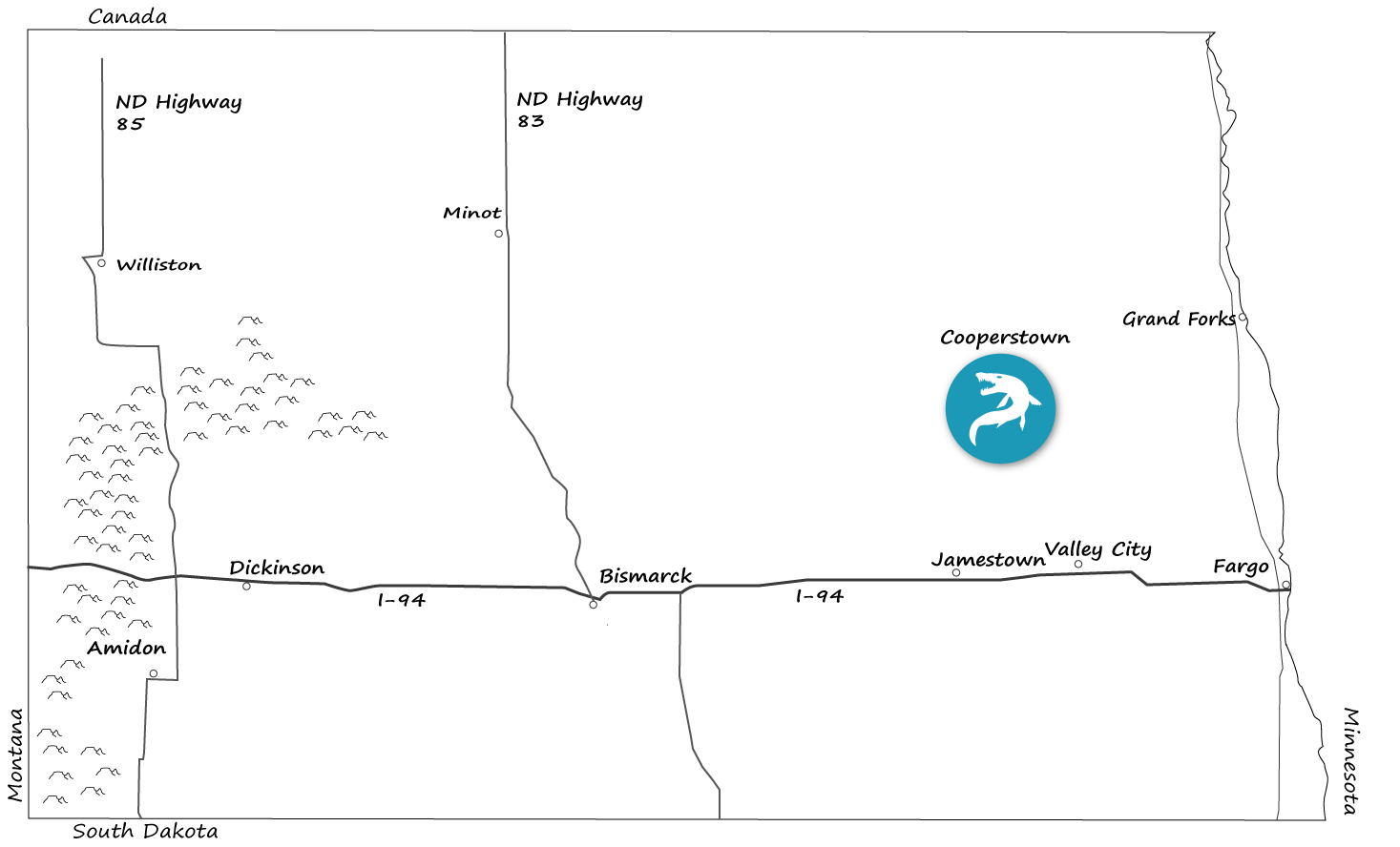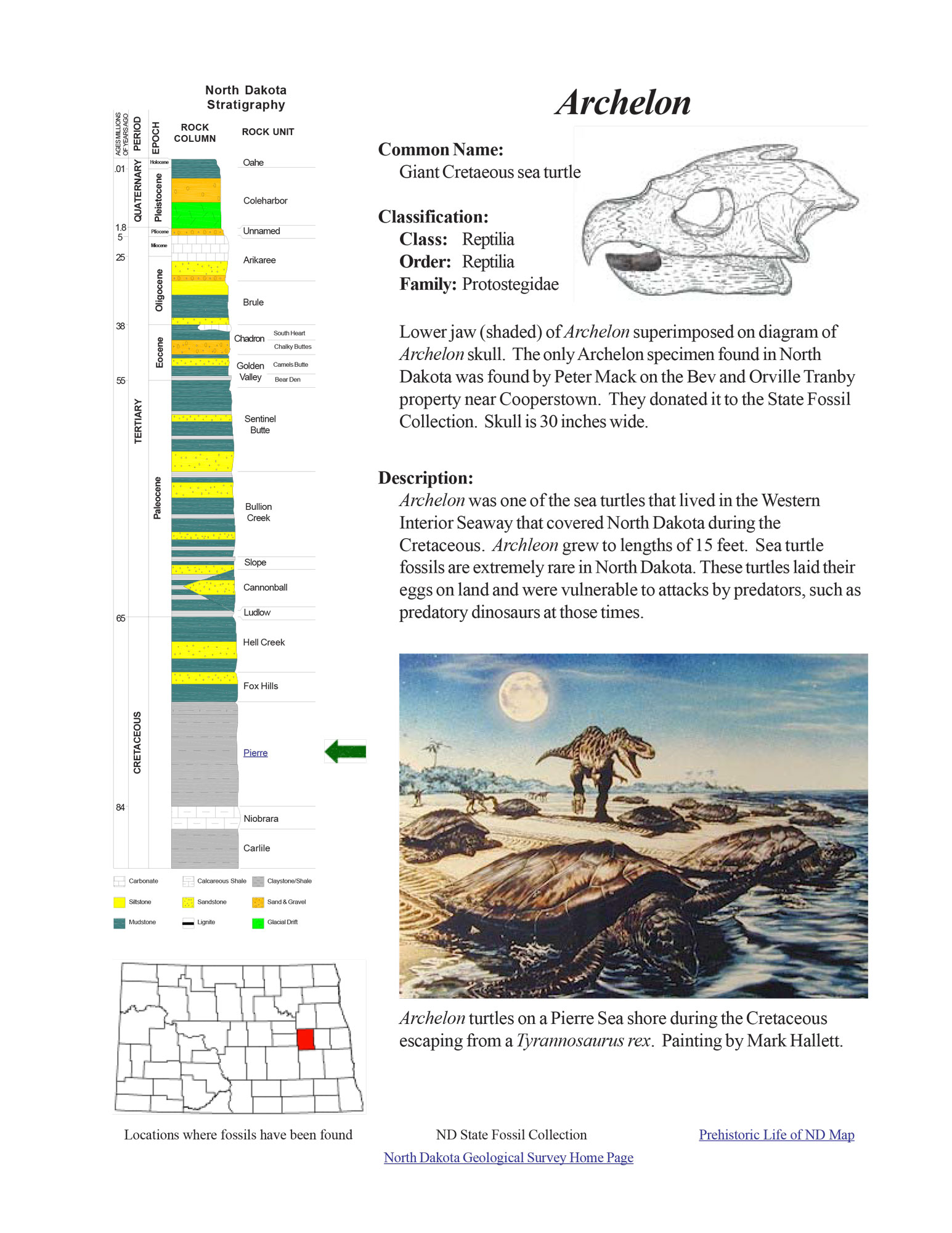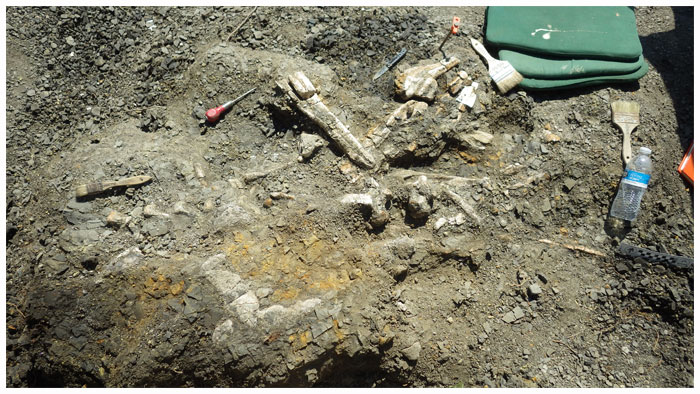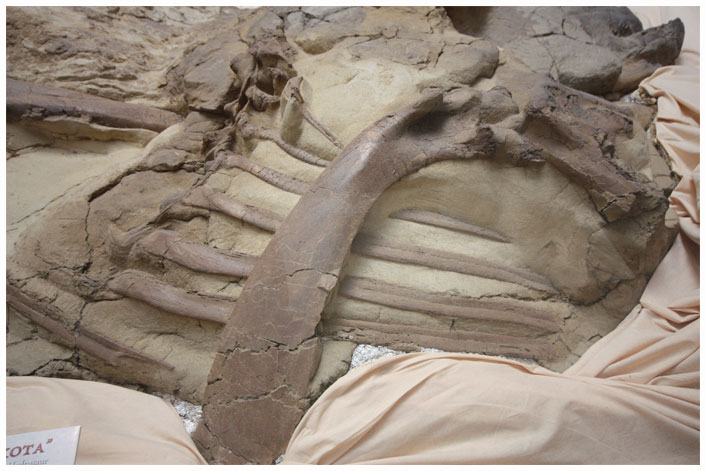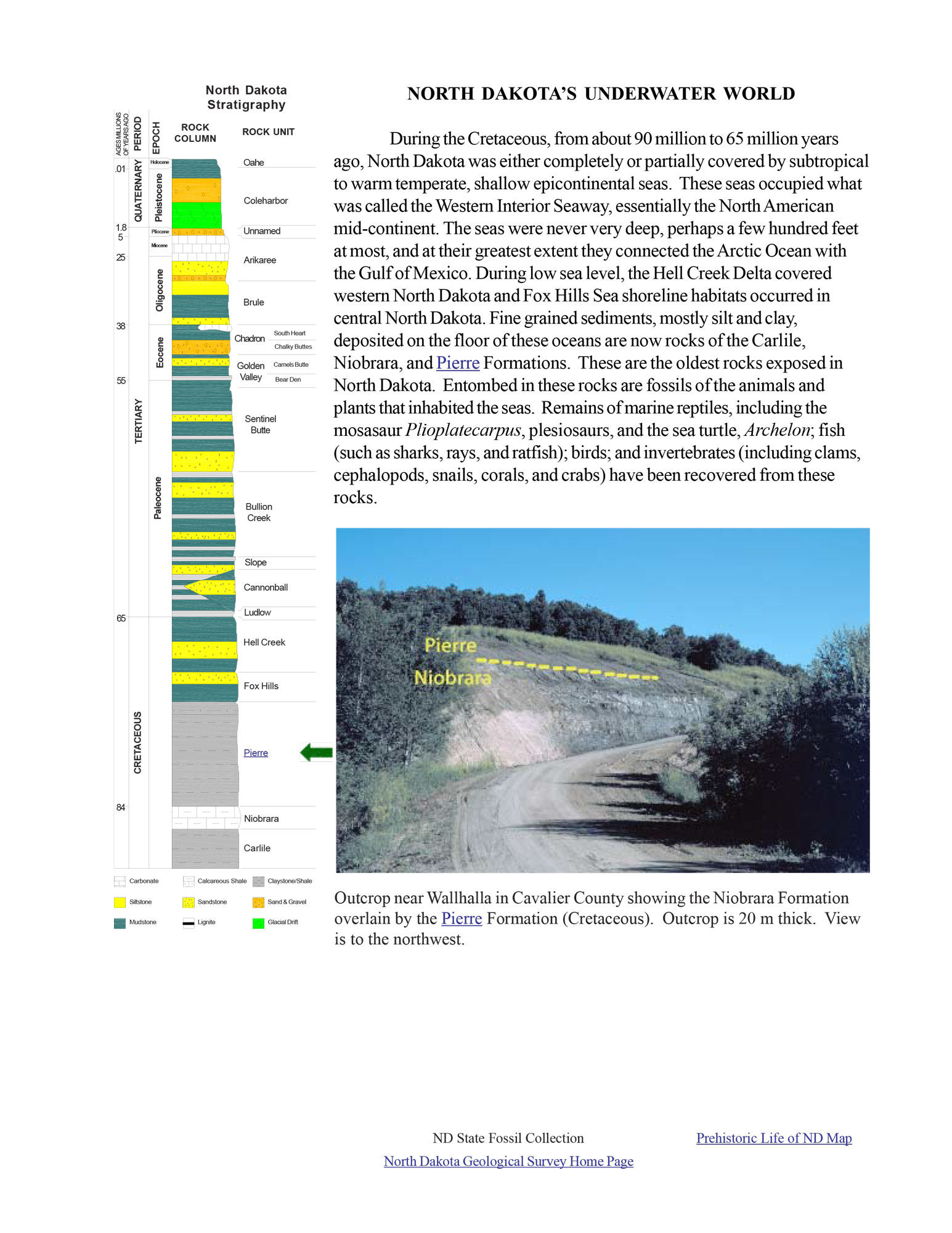
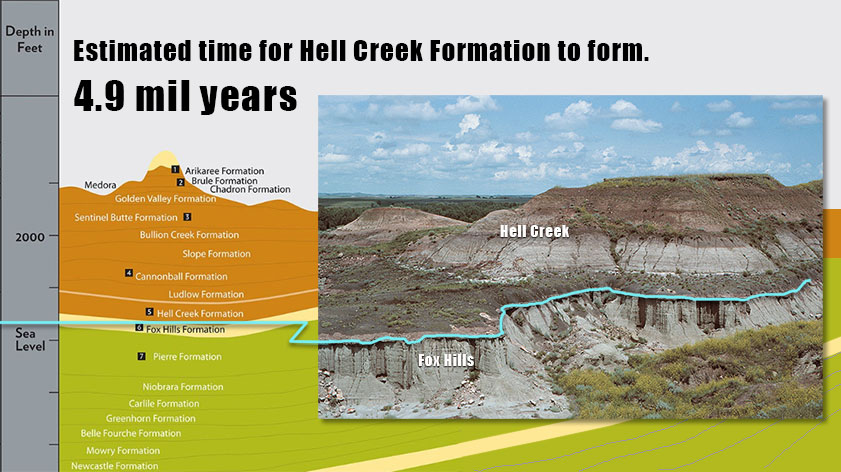
Relative dating helps us understand the order events happened. The law of superposition states that in unaltered layers of sediment, the oldest layer will be at the bottom. This important concept helps geologists and paleontologists, who study rocks and fossils, use relative dating techniques to identify the ages of rocks and fossils. Relative dating determines the order of objects or events, without necessarily knowing the specific, or absolute, age of each.
Geologists and paleontologists work like detectives using clues to figure out what happened first and what happened next. Use the clues in the following picture to see if you can use relative dating, and the law of superposition, to solve a mystery:
You are called to a crime scene where a woman, Agnes Brown, was murdered in her home during the night. It rained, and the ground is full of footprints and tire tracks. By observing these clues and talking to the people living in the house and neighbors, you must figure out who the murderer is. You have discovered that:
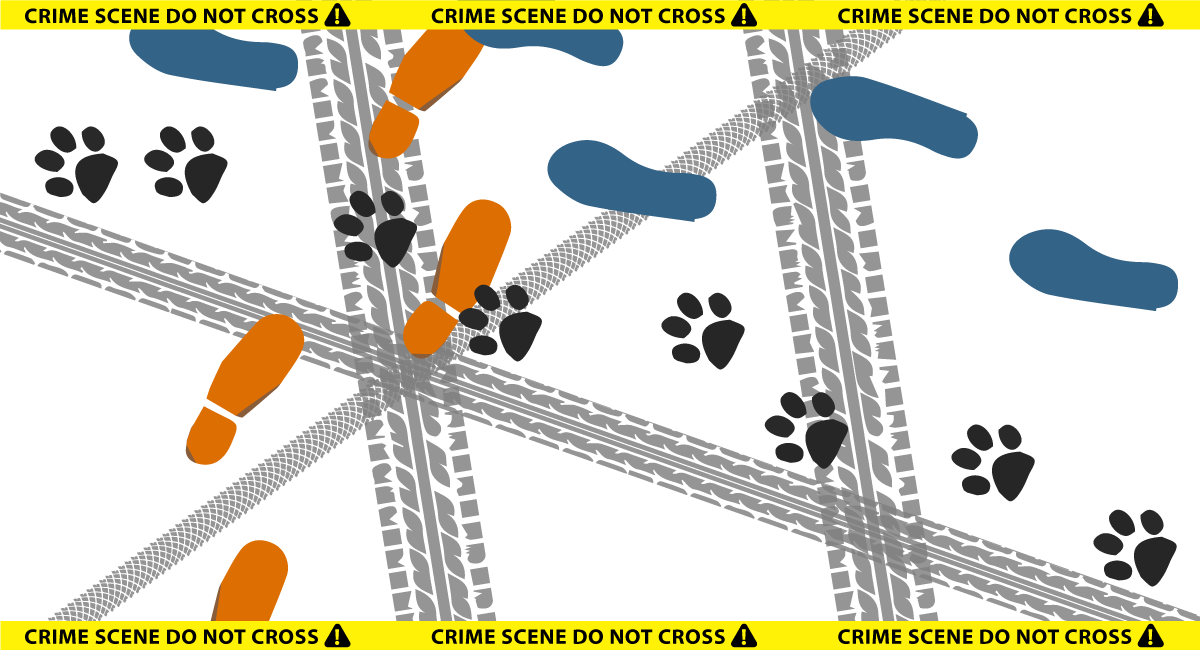
- 1) Agnes Brown’s husband, Ben Brown, drives a car.
- 2) The maid, Lucy, rides a bicycle to workk.
- 3) The cook, Sam, rides a motorcycle.
- 4) The butler, Erik, walks to work.
- 5) The neighbor, George, has a dog, and visits often.
The murder must have been the last person to come to the house. Who did it?
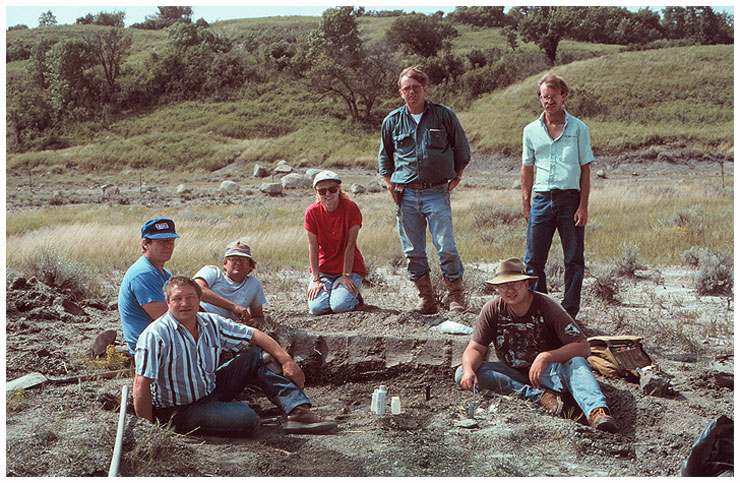
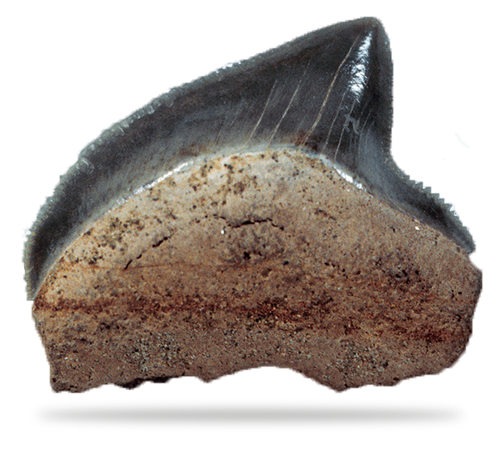
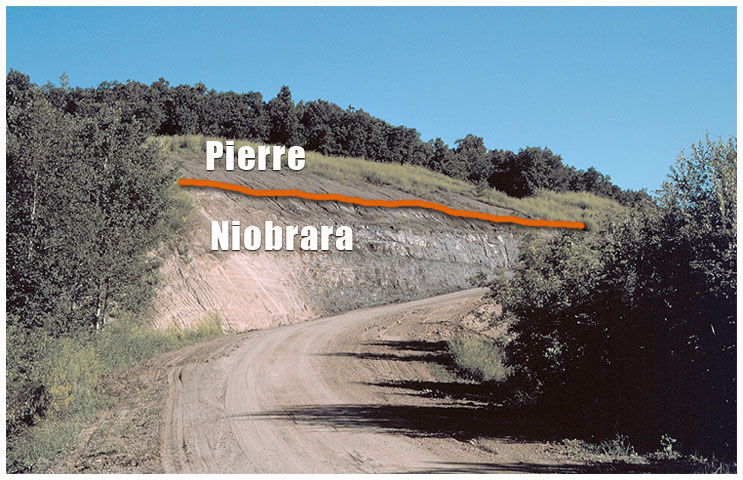 The Niobrara and Pierre Shale Formations are the oldest rocks exposed on the surface in North Dakota. They can be found in places like Walhalla in Cavalier County and Cooperstown in Griggs County.
The Niobrara and Pierre Shale Formations are the oldest rocks exposed on the surface in North Dakota. They can be found in places like Walhalla in Cavalier County and Cooperstown in Griggs County.
